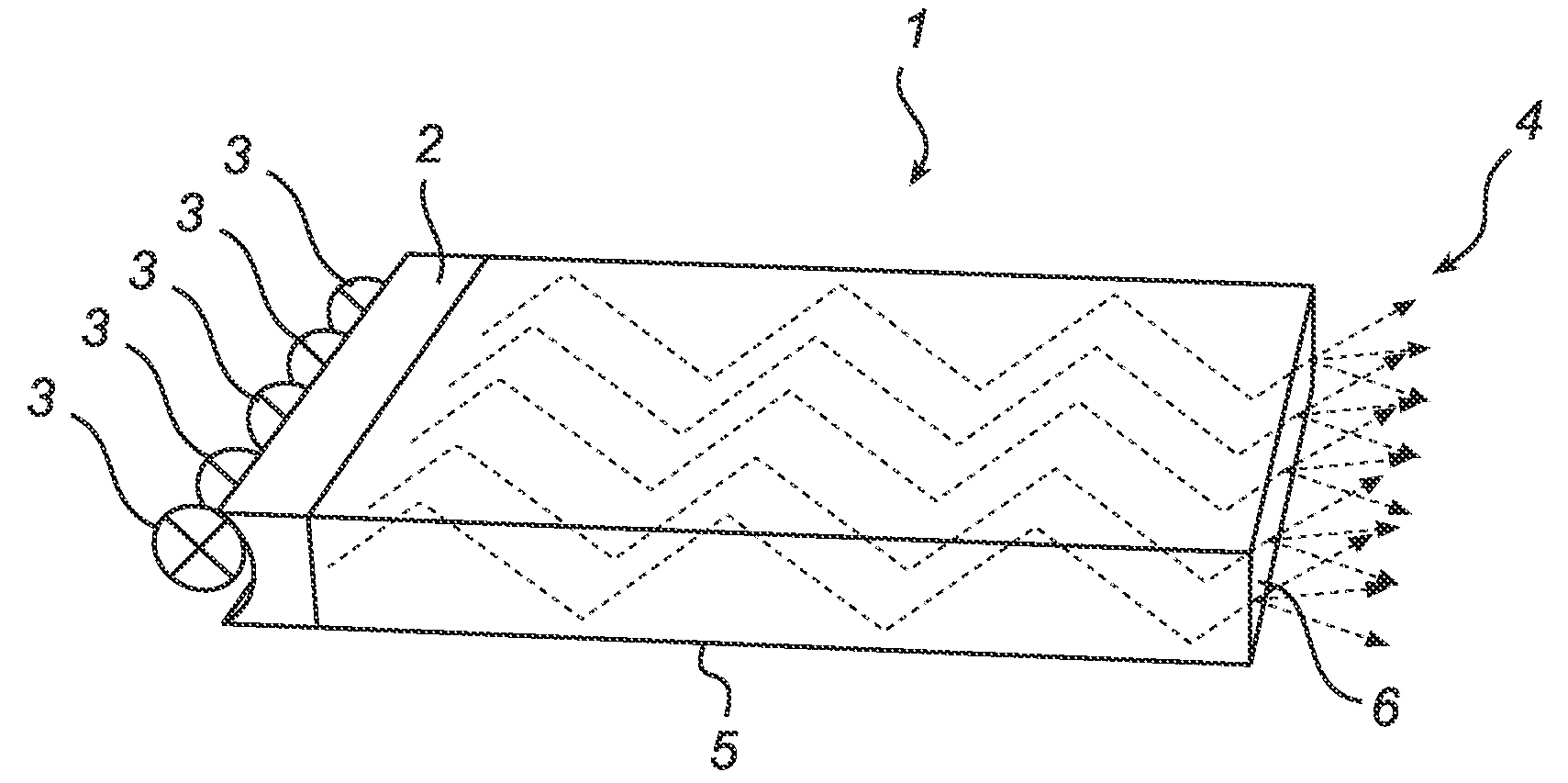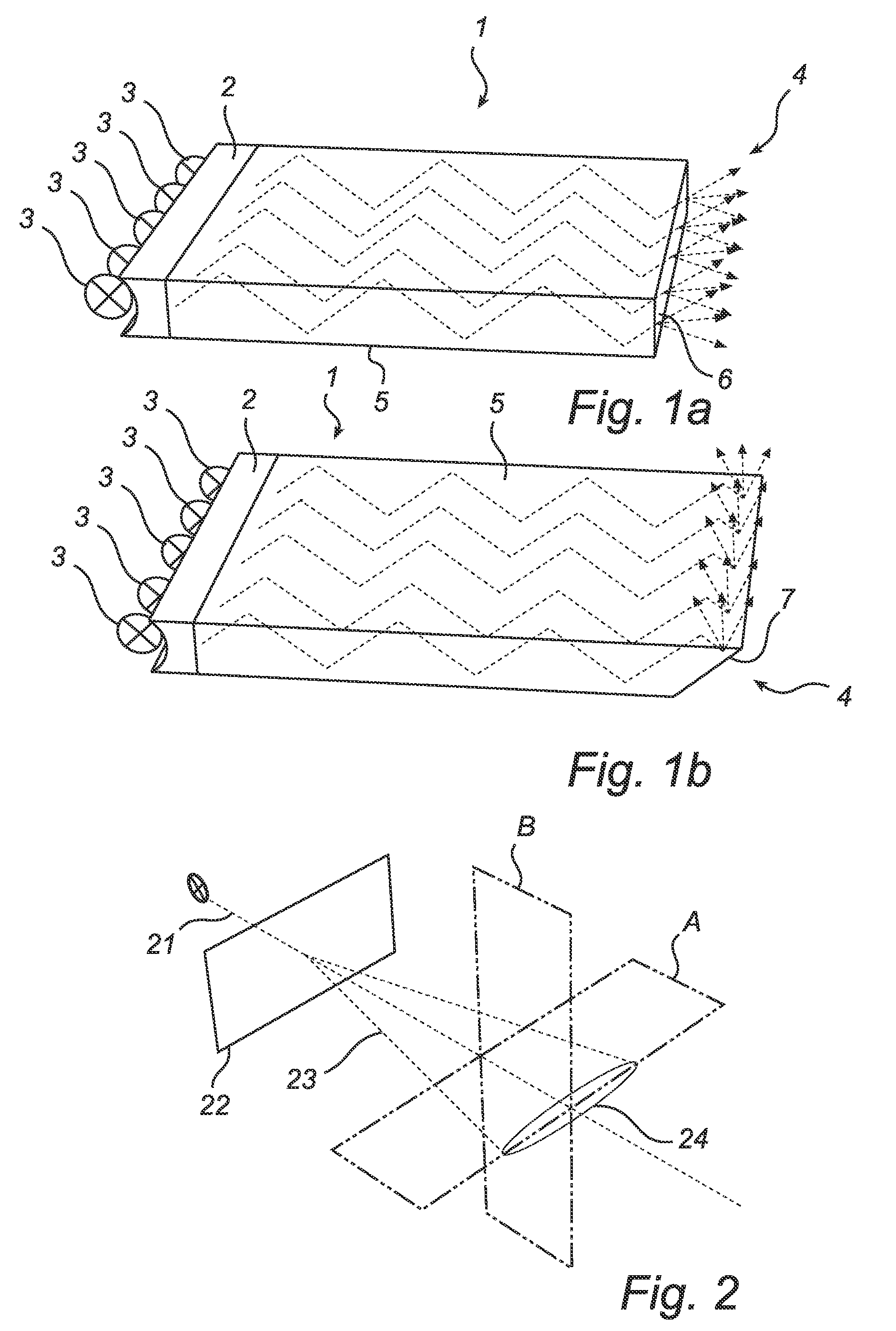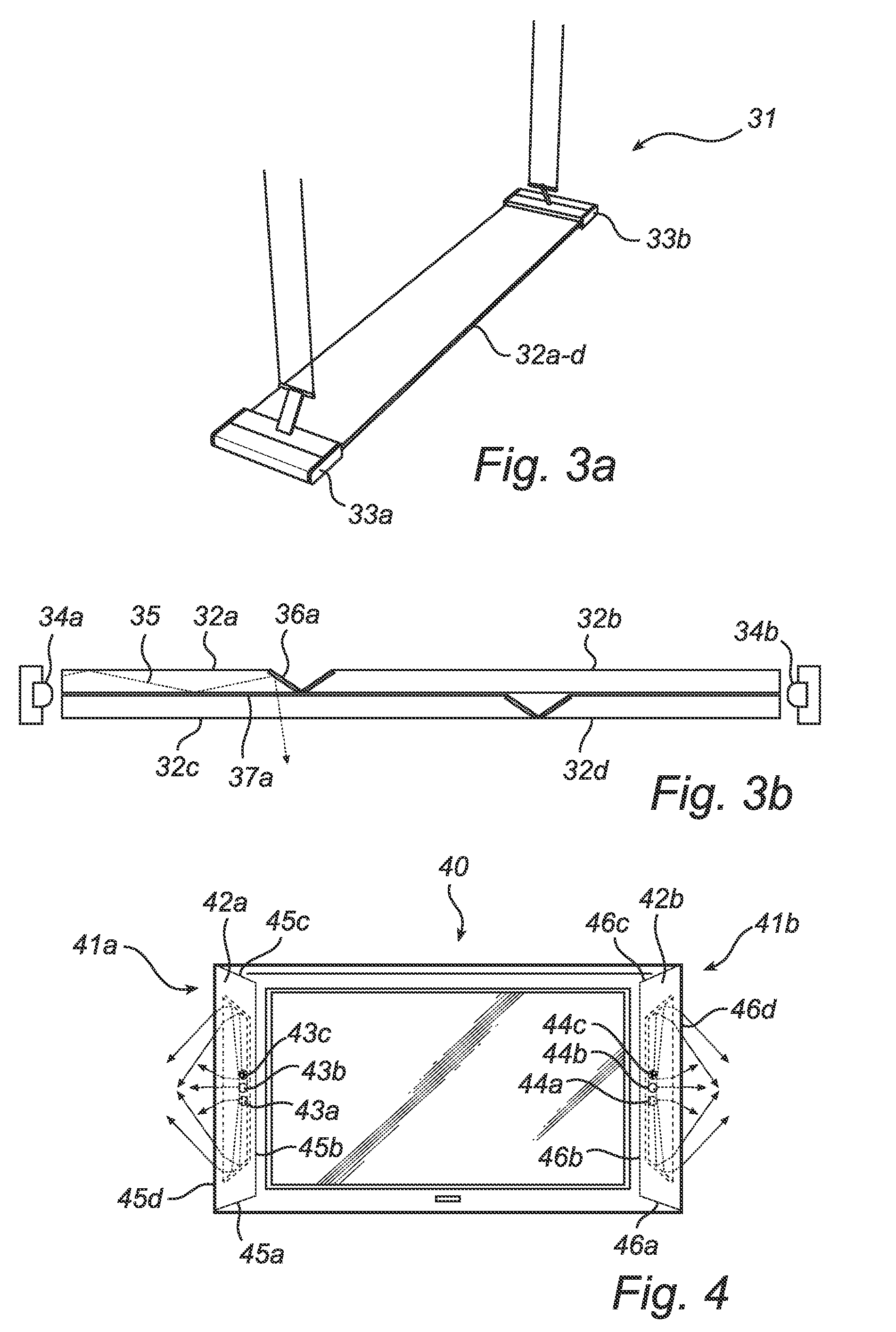Waveguide with asymmetric outcoupling
a waveguide and asymmetric technology, applied in the field of waveguides, can solve problems such as insufficient spatial uniformity, and achieve the effect of improving the spatial uniformity of ligh
- Summary
- Abstract
- Description
- Claims
- Application Information
AI Technical Summary
Benefits of technology
Problems solved by technology
Method used
Image
Examples
Embodiment Construction
[0027]FIGS. 1a-b show a flat planar waveguide 1 comprising an incoupling structure 2 adapted to receive light from a plurality of light sources 3, e.g. LEDs, and an outcoupling structure 4, adapted to couple light out of the waveguide 1. Between the incoupling structure 2 and the outcoupling structure 4, light is retained in the waveguide 1 by guiding edges 5. The guiding edges 5 may rely upon total internal reflection (TIR), reflectors, or a combination of TIR and reflectors at the edges and / or top and / or bottom surfaces.
[0028]The waveguide can be formed of a slab of a single dielectric material or combinations of dielectric materials. Suitable dielectric materials include different transparent materials, such as various types of glass, poly-methyl methacrylate (PMMA) etc. The waveguide may also be air, at least partly enclosed by waveguide reflectors. The material of the waveguide is preferably selected such that the interface between the waveguide and the surrounding medium fulfi...
PUM
 Login to View More
Login to View More Abstract
Description
Claims
Application Information
 Login to View More
Login to View More - R&D
- Intellectual Property
- Life Sciences
- Materials
- Tech Scout
- Unparalleled Data Quality
- Higher Quality Content
- 60% Fewer Hallucinations
Browse by: Latest US Patents, China's latest patents, Technical Efficacy Thesaurus, Application Domain, Technology Topic, Popular Technical Reports.
© 2025 PatSnap. All rights reserved.Legal|Privacy policy|Modern Slavery Act Transparency Statement|Sitemap|About US| Contact US: help@patsnap.com



